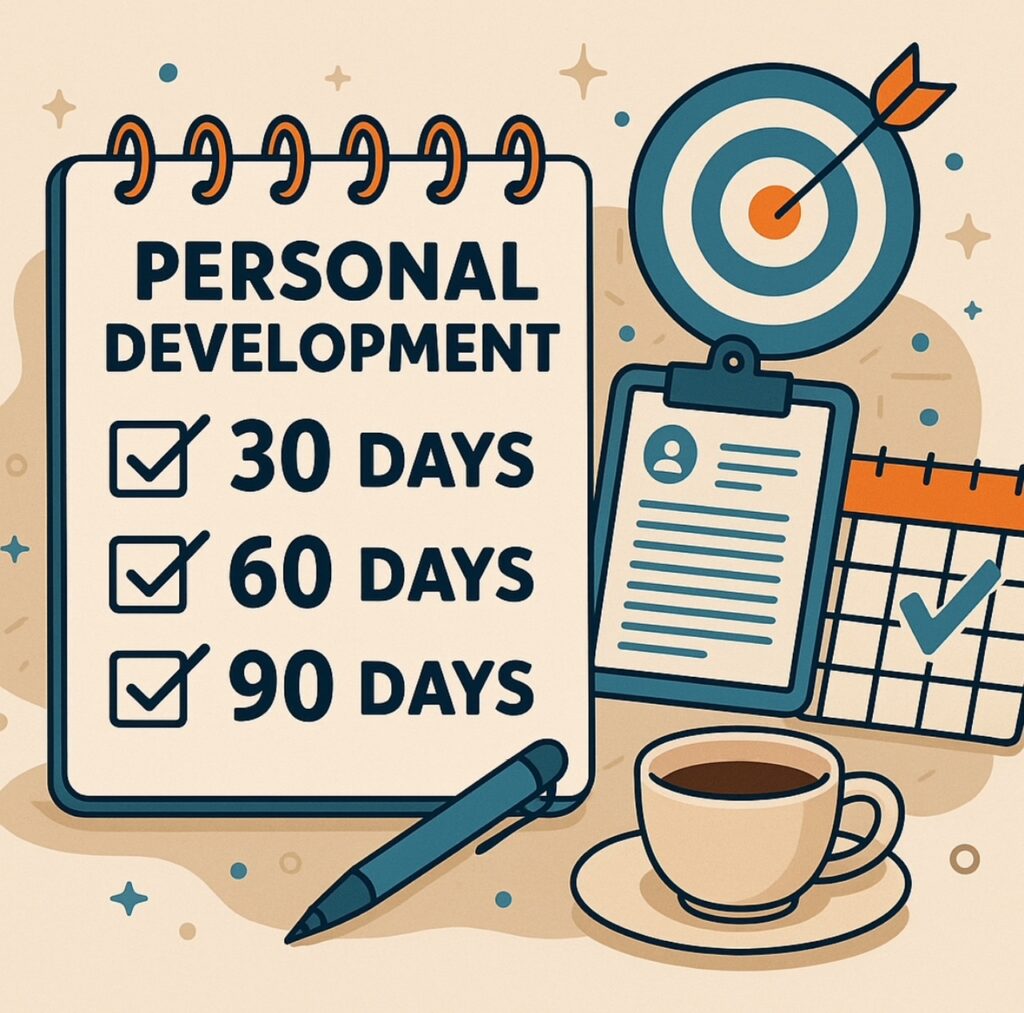Hey there, it’s Dii Pooler! Welcome to my blog series on stress management. Life gets stressful and chaotic, so I’m all about finding practical, evidence-based tools that actually make a difference in our daily lives. Today, we’re diving into something that’s been absolutely transformative for me: breathwork.
Now, I know what you might be thinking. Another wellness trend? But here’s the thing: breathwork isn’t some new fad. It’s rooted in ancient practices, and modern science is finally catching up to prove what practitioners have known for thousands of years. So grab a cup of tea (or coffee, no judgment here), get comfortable, and let’s talk about how something as simple as breathing differently can change your entire stress response.
Let’s talk about something you’ve been doing since the moment you were born: breathing. But here’s the thing: most of us have been doing it on autopilot for so long that we’ve forgotten just how powerful our breath can be.
If you’re feeling overwhelmed, anxious, or just generally stressed (and honestly, who isn’t these days?), I’ve got good news. You already have one of the most effective stress-management tools available, and it’s completely free, always accessible, and doesn’t require a prescription. It’s your breath.
I’m talking about breathwork, and before you roll your eyes thinking this is some woo-woo trend, let me hit you with the science. Because the research…. It’s actually pretty incredible.
What Is Breathwork, Really?
Breathwork is essentially the practice of consciously controlling your breathing patterns to influence your mental, emotional, and physical state. Think of it as turning your breath from an unconscious bodily function into an intentional wellness tool.
The concept isn’t new. It’s rooted in ancient practices like pranayama from yoga and qigong from traditional Chinese medicine. But modern science has caught up, and researchers are now validating what practitioners have known for centuries: the way you breathe directly impacts how you feel.
Recent research shows that controlled breathwork practices have emerged as powerful tools for stress management and well-being, with studies demonstrating that certain techniques can produce greater improvements in mood and reductions in physiological arousal compared to mindfulness meditation alone.
The Science: Does Breathwork Actually Work for Stress?
Let’s get into the data, because this is where it gets exciting.
A comprehensive meta-analysis of randomized controlled trials examined breathwork’s effectiveness across 12 studies with 785 participants and found a significant small-to-medium effect size, showing that breathwork was associated with meaningfully lower levels of self-reported stress compared to non-breathwork controls.
But it doesn’t stop at stress. The same research revealed similar significant effects for self-reported anxiety and depressive symptoms, suggesting breathwork might be a versatile tool for overall mental health.
What I find particularly compelling is that breathwork acts directly on the autonomic nervous system as a “bottom-up” approach to stress reduction, and its benefits appear to persist across diverse populations. This means it’s not just for one type of person. It can work for you whether you’re a busy parent, a stressed-out student, or someone managing chronic anxiety.
Even more impressive? A Stanford-led study found that just 5 minutes of daily breathwork over one month, particularly techniques that emphasize prolonged exhalations like cyclic sighing, produced greater improvement in mood and reduction in respiratory rate compared to mindfulness meditation.
Five. Minutes. Let that sink in.
How Does Breathwork Reduce Stress?
Here’s where the biology gets beautiful.
When you’re stressed, your body activates what’s called the sympathetic nervous system: your fight-or-flight response. Your heart races, your muscles tense, your breathing becomes shallow and rapid. This system is fantastic when you’re actually facing danger, but not so great when it’s triggered by work deadlines or traffic jams.
Through diaphragmatic breathing, we stimulate the vagus nerve and send signals to our brain to activate the parasympathetic nervous system, essentially your body’s “rest and digest” mode. This physiological shift is measurable: heart rate slows, blood pressure decreases, and your body gets the message that it’s safe to relax.
Research shows that deep breathing techniques significantly reduce the production of hormones associated with stress, such as cortisol, while also increasing attention levels. You’re literally changing your body’s chemistry with your breath.
Let me break down the most effective techniques for beginners, all backed by research:
1. Box Breathing (4-4-4-4)
Box breathing involves inhaling slowly through your nose for four counts, holding the breath for four counts, exhaling for four counts, then holding again for four counts. Think of tracing the four sides of a box as you breathe.
Best for: Acute stress moments, before important meetings, or when you need to regain focus quickly.
Box breathing is used by Navy SEALs and other high-stress professionals to calm the nervous system and improve concentration. If it works for someone defusing bombs, it can probably handle your Tuesday afternoon.
2. 4-7-8 Breathing
With 4-7-8 breathing, you inhale slowly through the nose for four counts, hold your breath for seven counts, and then exhale completely through the mouth for eight counts.
Best for: Falling asleep, calming anxiety, or managing panic attack
3. Diaphragmatic Breathing (Belly Breathing)
Diaphragmatic breathing means using your diaphragm correctly while breathing, allowing you to use your lungs at 100% capacity to increase lung efficiency.
To do it: Place one hand on your abdomen and one on your upper chest, then breathe slowly through your nose so that the hand on your abdomen rises while the hand on your chest remains relatively still.
Best for: Building a daily practice foundation, managing chronic stress, or improving overall breathing patterns.
4. Cyclic Sighing
This is the star of the Stanford study I mentioned earlier. Cyclic sighing emphasizes prolonged exhalations. You inhale slowly through the nose, take a second shorter inhale to completely fill the lungs, and then release with a long, slow exhale.
Best for: Immediate mood improvement and daily stress management.
Who Is Breathwork Best For?
The short answer? Almost everyone. But let’s get specific.
Breathwork is particularly helpful if you:
- Experience regular stress or anxiety
- Have trouble sleeping or winding down
- Feel overwhelmed by racing thoughts
- Want a wellness practice that requires zero equipment or apps
- Need tools for managing panic attacks or acute stress
- Are looking for complementary approaches to therapy or medication
Research indicates that breathwork’s effectiveness isn’t limited by population type, with studies showing benefits across diverse groups including youth, high-anxiety populations, and healthy individuals.
Who Should Be Cautious or Avoid Breathwork?
While breathwork is generally safe, certain people should consult with their healthcare provider first or avoid certain techniques:
Pregnant individuals should be cautious because intense breathing can elevate blood pressure and heart rate, and may theoretically trigger uterine contractions.
People with severe cardiovascular conditions, including those with a history of heart attacks, uncontrolled high blood pressure, cardiac arrhythmia, or recent strokes, should seek medical clearance, as intense breathwork can affect heart rate and blood pressure.
Individuals with respiratory conditions like severe asthma or COPD should consult their doctor, though for some people with milder forms, certain breathwork techniques may actually be beneficial when practiced with proper guidance and with rescue medication nearby.
If you have any chronic health condition or are taking medication, it’s always wise to check with your healthcare provider before starting a new breathwork practice.
How to Start Your Breathwork Practice (Without Overwhelm)
Ready to begin? Here’s your no-BS getting-started guide:
Start Small and Build
Begin with just 2 to 5 minutes a day, and increase your time as the exercise becomes easier and more comfortable. Seriously, don’t try to meditate for 30 minutes on day one. That’s a recipe for giving up.
Create a Simple Routine
Pick one technique (I recommend box breathing or diaphragmatic breathing for beginners) and commit to practicing it at the same time each day. Morning coffee? Before bed? During your lunch break? Find a time that works and stick with it for at least a week before deciding if it’s working for you.
Set Up Your Space
Find someplace quiet where you won’t be disturbed, and when you’re starting out, it’s best to carve out a peaceful time and space for your practice. This doesn’t need to be elaborate. Just somewhere you can sit or lie down comfortably for a few minutes.
Manage Your Expectations
Don’t expect immediate, dramatic results every time, as these practices won’t necessarily lead to the same outcome every session, and it can take weeks or even months to feel the full benefits.
Some days you’ll feel instantly calmer. Other days, your mind will race the whole time. Both are normal. The magic is in the consistency, not perfectio
Track Your Progress
Keep a simple log of how you feel before and after each session. You might not notice the shifts day-to-day, but looking back over a week or month can reveal patterns and improvements you’d otherwise miss.
Common Questions About Breathwork
How often should I practice breathwork?
Effective breathwork interventions typically include multiple sessions with regular practice, as adherence and consistency appear important for achieving benefits. Daily practice is ideal, but even 3-4 times per week can produce benefit
How long until I see results?
Some people notice immediate effects: feeling calmer within minutes of a session. For lasting changes in stress resilience and anxiety levels, give it at least 3-4 weeks of consistent practice.
Can breathwork replace therapy or medication?
No. While breathwork can be easily taught and learned, making it an accessible intervention that some government health platforms already recommend for stress and anxiety symptoms, it should complement, not replace, professional mental health treatment when needed.
What if I feel dizzy or lightheaded?
This can happen, especially with more intense techniques. If you experience dizziness, simply return to normal breathing and take a break. Start with gentler techniques and build gradually.
Can I do breathwork anywhere?
Yes, but never practice intense breathwork techniques while driving, operating machinery, or in water, as some techniques can create altered states or lightheadedness.
The Bottom Line
Look, I get it. Another wellness practice to add to your already overflowing to-do list might feel like just more pressure. But breathwork is different because you’re already breathing. You’re just learning to do it more intentionally.
The science is clear: deliberate control of the breath has therapeutic potential to improve mental health, offering an accessible, scalable, and cost-free intervention that puts treatment tools directly in the hands of the individual.
You don’t need special equipment, expensive classes, or hours of free time. Just you, your breath, and a few minutes of intentional practice.
Start with five minutes of box breathing tomorrow morning. That’s it. No pressure, no perfection required. Just notice what happens when you give yourself permission to pause and breathe (really breathe) for a few moments.
Your stressed-out nervous system will thank you.


